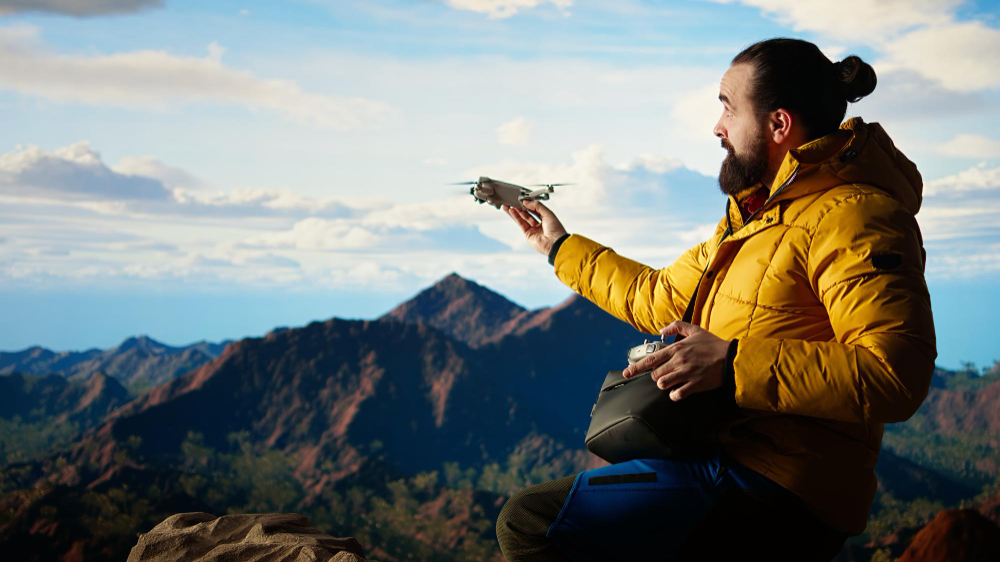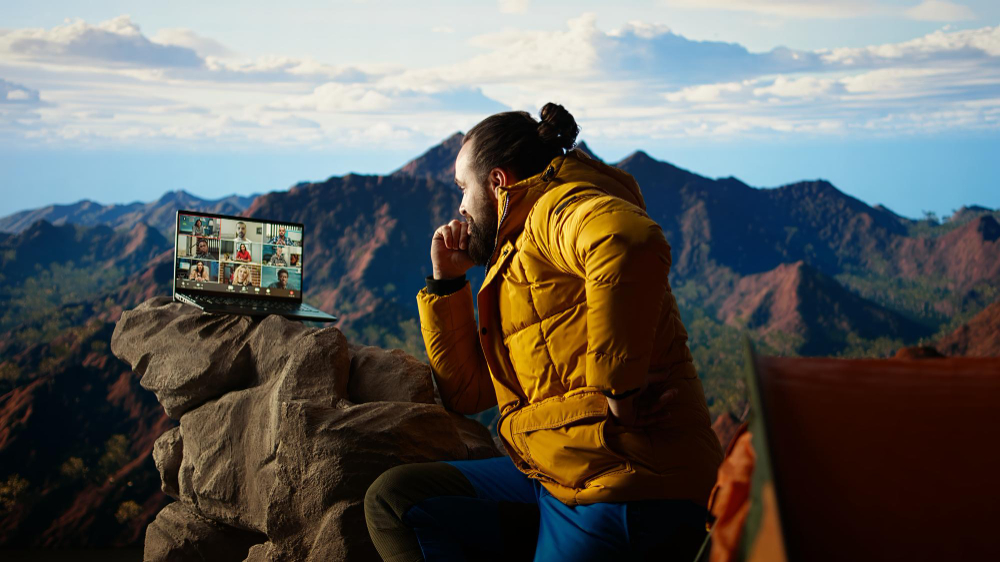👋 Welcome!
Mode Activated: 📝 Article Mode
Let’s create a fully SEO-optimized, long-form article for your keyword:
“How to Choose the Right Backpack for Your Next Adventure”
Comprehensive SEO Outline
| Heading Level | Section Title |
|---|---|
| H1 | How to Choose the Right Backpack for Your Next Adventure |
| H2 | Introduction: The Foundation of Every Great Adventure |
| H2 | Why Choosing the Right Backpack Matters |
| H3 | Comfort and Fit for Long-Term Use |
| H3 | Durability and Functionality for Different Terrains |
| H2 | Understanding Backpack Types |
| H3 | Daypacks — Short Hikes and City Adventures |
| H3 | Multi-Day Hiking Backpacks |
| H3 | Travel Backpacks for Global Explorers |
| H3 | Technical Packs for Specialized Activities |
| H2 | Determining the Right Backpack Size and Capacity |
| H3 | Measuring Your Torso Length Correctly |
| H3 | Backpack Capacity Guide by Adventure Type |
| H3 | Balancing Weight and Space for Efficiency |
| H2 | Key Features to Look for in a Quality Backpack |
| H3 | Frame Types: Internal vs. External vs. Frameless |
| H3 | Straps, Padding, and Load Distribution |
| H3 | Pockets, Access Points, and Organization |
| H3 | Ventilation Systems and Back Support |
| H2 | Material and Build Quality Considerations |
| H3 | Waterproofing and Weather Resistance |
| H3 | Zippers, Buckles, and Stitching Strength |
| H2 | Fitting Your Backpack: Step-by-Step Guide |
| H3 | Adjusting the Shoulder, Chest, and Hip Straps |
| H3 | Checking Balance and Center of Gravity |
| H2 | Choosing the Right Backpack for Your Adventure Type |
| H3 | Hiking and Trekking Adventures |
| H3 | Camping and Backpacking Trips |
| H3 | International and Urban Travel |
| H3 | Climbing, Skiing, and Technical Expeditions |
| H2 | Maintenance Tips: Extending Your Backpack’s Lifespan |
| H3 | Cleaning and Storing Your Backpack Properly |
| H3 | Quick Repairs and Waterproofing Maintenance |
| H2 | FAQs About Choosing the Right Backpack |
| H2 | Conclusion: Invest in Comfort, Adventure, and Longevity |
How to Choose the Right Backpack for Your Next Adventure
SEO Title: How to Choose the Right Backpack for Your Next Adventure — Expert Gear Buying Guide
Meta Description: Learn how to choose the perfect backpack for hiking, camping, or travel. Explore expert tips on size, fit, materials, and features for your next adventure.
Introduction: The Foundation of Every Great Adventure
Every successful adventure begins with the right gear — and at the heart of it all is your backpack. Whether you’re hiking through dense forests, camping under the stars, or exploring cities around the world, your backpack becomes your travel companion, storage system, and lifeline.
Choosing the right one isn’t just about style — it’s about comfort, functionality, and performance. The wrong backpack can cause fatigue, back pain, or even ruin your trip. But the right one? It can make every step of your journey smoother, lighter, and more enjoyable.
Why Choosing the Right Backpack Matters
Comfort and Fit for Long-Term Use
A well-fitted backpack reduces strain on your shoulders and spine. It distributes weight evenly, allowing you to move naturally even when carrying heavy loads. Look for adjustable straps, hip belts, and ergonomic padding for maximum comfort.
Durability and Functionality for Different Terrains
Your backpack must withstand changing weather and rough handling. Choose tear-resistant, waterproof materials like ripstop nylon or polyester. The stronger your pack, the more confident you’ll feel on rugged trails and multi-day adventures.
Understanding Backpack Types
Daypacks — Short Hikes and City Adventures
Designed for light loads, daypacks (15–30L) are perfect for short hikes or daily use. They typically include hydration bladder compatibility, side pockets, and lightweight padding.
Multi-Day Hiking Backpacks
If you’re heading out for a weekend or longer trek, consider a 40–70L backpack. These packs often include internal frames, load lifters, and extra compartments for tents, sleeping bags, and cooking gear.
Travel Backpacks for Global Explorers
Travel backpacks (35–50L) are optimized for airports and hostels. They usually feature front-loading compartments, lockable zippers, and padded laptop sleeves — ideal for digital nomads and frequent flyers.
Technical Packs for Specialized Activities
Mountaineering, skiing, or climbing adventures require technical backpacks. These packs include gear loops, ice axe attachments, and reinforced panels for heavy-duty use.
Determining the Right Backpack Size and Capacity
Measuring Your Torso Length Correctly
The most important factor in backpack fit is torso length, not height.
- Find the bony bump at the base of your neck.
- Measure down to the top of your hip bones.
- Use this measurement to find your ideal size (small, medium, or large).
Backpack Capacity Guide by Adventure Type
| Adventure Type | Ideal Capacity | Duration |
|---|---|---|
| Day Hike | 15–30L | 1 day |
| Overnight Hike | 30–50L | 1–2 days |
| Multi-Day Trek | 50–70L | 3–5 days |
| Expedition | 70L+ | 5+ days |
Balancing Weight and Space for Efficiency
Avoid overpacking — the lighter your load, the more enjoyable your trip. Ideally, your packed backpack should not exceed 20% of your body weight for comfort and endurance.
Key Features to Look for in a Quality Backpack
Frame Types: Internal vs. External vs. Frameless
- Internal Frame: Streamlined, stable, and great for uneven trails.
- External Frame: Ideal for heavy loads and good ventilation.
- Frameless: Lightweight option for ultralight travelers.
Straps, Padding, and Load Distribution
Look for padded shoulder straps, load-lifting adjusters, and a wide hip belt. These features reduce shoulder fatigue and shift weight to your hips.
Pockets, Access Points, and Organization
A good backpack keeps essentials organized. Side mesh pockets, front-loading access, and hidden compartments improve convenience and accessibility on the go.
Ventilation Systems and Back Support
Modern backpacks use air mesh back panels or suspension systems to keep airflow moving — crucial for warm climates or long hikes.
Material and Build Quality Considerations
Waterproofing and Weather Resistance
Choose backpacks with DWR (Durable Water Repellent) coating or include a rain cover. For extreme environments, consider waterproof liners or dry bags inside your main compartment.
Zippers, Buckles, and Stitching Strength
Quality zippers (like YKK) and reinforced stitching add years to your backpack’s life. Test buckles for strength and ensure all seams are double-stitched for durability.
Fitting Your Backpack: Step-by-Step Guide
Adjusting the Shoulder, Chest, and Hip Straps
- Loosen all straps before putting on your backpack.
- Adjust the hip belt first — it should sit just above your hips.
- Tighten the shoulder straps until the pack hugs your back snugly.
- Secure the sternum (chest) strap to stabilize the load.
Checking Balance and Center of Gravity
Once loaded, the backpack should feel balanced — not leaning backward or pulling downward. Walk and test movements before starting your hike to ensure comfort.
Choosing the Right Backpack for Your Adventure Type
Hiking and Trekking Adventures
Look for durable, weatherproof packs with hydration compatibility and load lifters. The Osprey Atmos or Deuter Futura series are great examples.
Camping and Backpacking Trips
Opt for larger capacity (50–70L) backpacks with compartments for tents, food, and sleeping bags.
International and Urban Travel
A carry-on-sized travel backpack with anti-theft zippers, organization panels, and compression straps is ideal for frequent travelers.
Climbing, Skiing, and Technical Expeditions
Choose technical backpacks with gear loops, reinforced fabric, and adjustable harness systems.
Maintenance Tips: Extending Your Backpack’s Lifespan
Cleaning and Storing Your Backpack Properly
- Hand wash with mild soap and cold water.
- Avoid machine washing — it can damage coatings and seams.
- Store in a cool, dry place, away from direct sunlight.
Quick Repairs and Waterproofing Maintenance
Patch small tears with nylon repair tape and reapply DWR spray after heavy use. Regular maintenance can add years to your backpack’s performance.
FAQs About Choosing the Right Backpack
Q1. How do I know what size backpack I need?
Base it on your torso length and trip duration. Use the capacity guide to match your adventure type.
Q2. What’s the difference between men’s and women’s backpacks?
Women’s packs have shorter torso lengths, contoured shoulder straps, and hip belts designed for better fit.
Q3. How do I test if a backpack fits well?
Load it with 10–15 pounds, adjust the straps, and walk around for a few minutes to check comfort.
Q4. Should I buy a waterproof backpack?
Yes, especially if you hike in wet regions — but even then, use a rain cover or liner for extra protection.
Q5. What’s the ideal weight for a loaded backpack?
Keep your backpack’s weight under 20–25% of your body weight for maximum comfort.
Q6. How long should a good backpack last?
With proper care, a high-quality backpack can last 8–12 years or more.
Conclusion: Invest in Comfort, Adventure, and Longevity
Your backpack isn’t just storage — it’s an extension of your body during your adventure. Choosing the right one means investing in safety, comfort, and performance.
Take the time to research, try different fits, and focus on functionality over fashion. Once you find the perfect backpack, it’ll be your trusted companion on every trail, trek, and trip — wherever your adventures lead you. 🎒🌍
External Source:
For professional gear reviews, visit REI’s Backpack Buying Guide.










